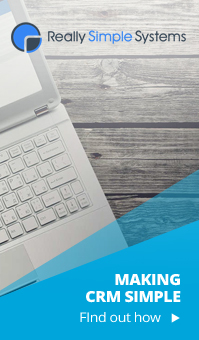
CRM for Small and Medium Businesses
The
needs for a CRM Application for a small or medium business are often just as
complicated as those for a large company. There are usually differences in a)
the number of users that need system access, b) simplified functionality and c)
less technical skills/capability/people in the business to bring the solution
to fruition.
There are six key steps for an SMB to consider.
- Review the CRM info on our site
- Review vendor shortlist
- Ensure vendors can meet your needs
- Shortlist two vendors
- Conduct and evaluation
Key things to consider at this stage include
- What are the business drivers behind the CRM Purchase (e.g. increase revenue, improve customer service)
- What functionality do you need
- Identify whether you have a preference for a cloud or on-site solution
The CRM Shortlist
In
terms of vendors, you will note that our recommendations will usually consist
of:
- Large and Profitable software companies
- Companies with a large number of customers across many industries
- Companies with an extensive range of partners and services options
This
is for important reasons:
- Choosing a CRM system is a business decision with expected system lifetime of 5-8 years
- Software companies only survive if they can grow their new customer numbers - that funds R&D for new functionality
- They are more likely to be viable and improving the products in 5 years time
Prove a Vendor meets your needs
Conduct
one-on-one meetings with these vendors/implementers to explain your company’s
needs and requirements.
Focus
on who they have as references customers in your industry and of your size.
This ensures that they understand your industry and the key areas of
functionality needed to make the solution a success. Have the vendor setup
conference calls or site visits to companies they have worked with in the past.
Shortlist two Vendors
Once
you have conducted the initial evaluation of vendors on your shortlist, you
need to cut that list down to the top two vendors. Who can your work with; who
do you trust to be with you over the long haul? (A typical CRM system may be in
place for 5-8 years.)
Although
you may have a strong preference for a vendor early in the evaluation process,
it is important to keep an open mind. In addition, it provides you some
leverage during negotiation.
Conduct an evaluation
This
is the time when vendors will need to prove that they can fulfil your CRM
needs. Review and compare how the different vendors’ applications work and map
to your internal business processes.
Draw
up a list of key attributes that you are looking for and score the vendors
against the attributes. The Implementers will often have these available and
will use them as resources to guide you through the evaluation phase.
Choose a vendor and deploy your CRM Solution
Once
you have all the information you need, you will finally be able to choose the
best CRM vendor to meet your needs.
Choose
the vendor and commit to a partnership to get the implementation right. Commit
the ‘brightest and best’ resources to the project. Give the project team
support and authority to make decisions on behalf of the company. This is the
best way to ensure a successful implementation.
Date posted: 2014-12-15 | Comments(0)
Do you need a CRM System?
The buying, installing and running of a CRM system
is an important move in a company’s development. It signals to staff and
customers that you are moving forward and have plans.
With this comes the added responsibility of
ensuring that the system helps to add-value to your business.
Studies show that on average, companies using CRM software grow their businesses at a rate 2-3 times
faster than those that do not. But you need to ensure that the system
is in place for the right reasons – this guide aims to help in clarifying those
reasons.
What is your high-level need?
Business is often about problems and the reason
you visited our site is that:
- You have a problem
- You hope that CRM will fix the problem, but you are not sure
- You need to understand what CRM can do and if it can fix the problem
In our discussions with customers, vendors and
analysts CRM systems are usually put in for two reasons:
- Opportunity
- Productivity
In some cases the Opportunity cannot be addressed with current systems and processes without hiring lots of new staff, so Productivity is also a driver.
Opportunity
CRM can help you to grow your business, to be more
efficient in winning and managing customers.
A CRM can help companies to better manage growth.
This may mean moving from spreadsheets and databases to running the business in
a CRM system. The information in the CRM is ‘up to date’; there is no “which
version of the forecast are we looking at” discussion. This is often called “the single source of truth”.
There are different sets of opportunities for
different departments in the business.
In B2B environments a common set of functions for
sales is called Sales Force Automation that can include:
- Account Management
- Contact Management
- Territory Management
- Identify target Companies
- Develop plans to generate business Leads
- Assign the best sales staff to manage Opportunities
- Optimise pricing offers to close Sales
- Manage Customers for long-term relationships
In many businesses, marketing is often an
after-thought – something that is done with the limited energy left after all
other tasks have been done. Marketing is often thought of as advertising and
brochures, but with a CRM system marketing should have a major role in your
business. A CRM system will allow your sales and marketing team to work
together, with marketing ‘preparing the ground’ for your sales people to have
discussions with prospects, customers and partners. They will have an integral
part to play in the five-step sales process above.
Examples can include marketing sending an email to
customers on the introduction of a new product. They can then identify and
measure which customers went to your website as a result of the email – these
can be prioritised for follow-up by sales.
CRM systems also have the ability to record
conversations with contacts and accounts. This can be extended to call-centre
functionality. All telephone calls outbound or in-bound can be recorded. They
can record the discussion with the customer, address and answer the question or
gather more information and raise follow-up flags.
In summary the CRM software consolidates all
customer information and processes into one, holistic view of each customer.
This enables customer-facing employees in sales, marketing and customer service
to make quick, informed decisions on everything from cross-selling and
up-selling opportunities to target marketing strategies and effective problem
resolution.
Productivity?
Sometimes a company has grown quickly and they realise that future growth is hampered by the ways they currently do things. A common issue ...
Read moreDate posted: 2014-12-15 | Comments(0)



